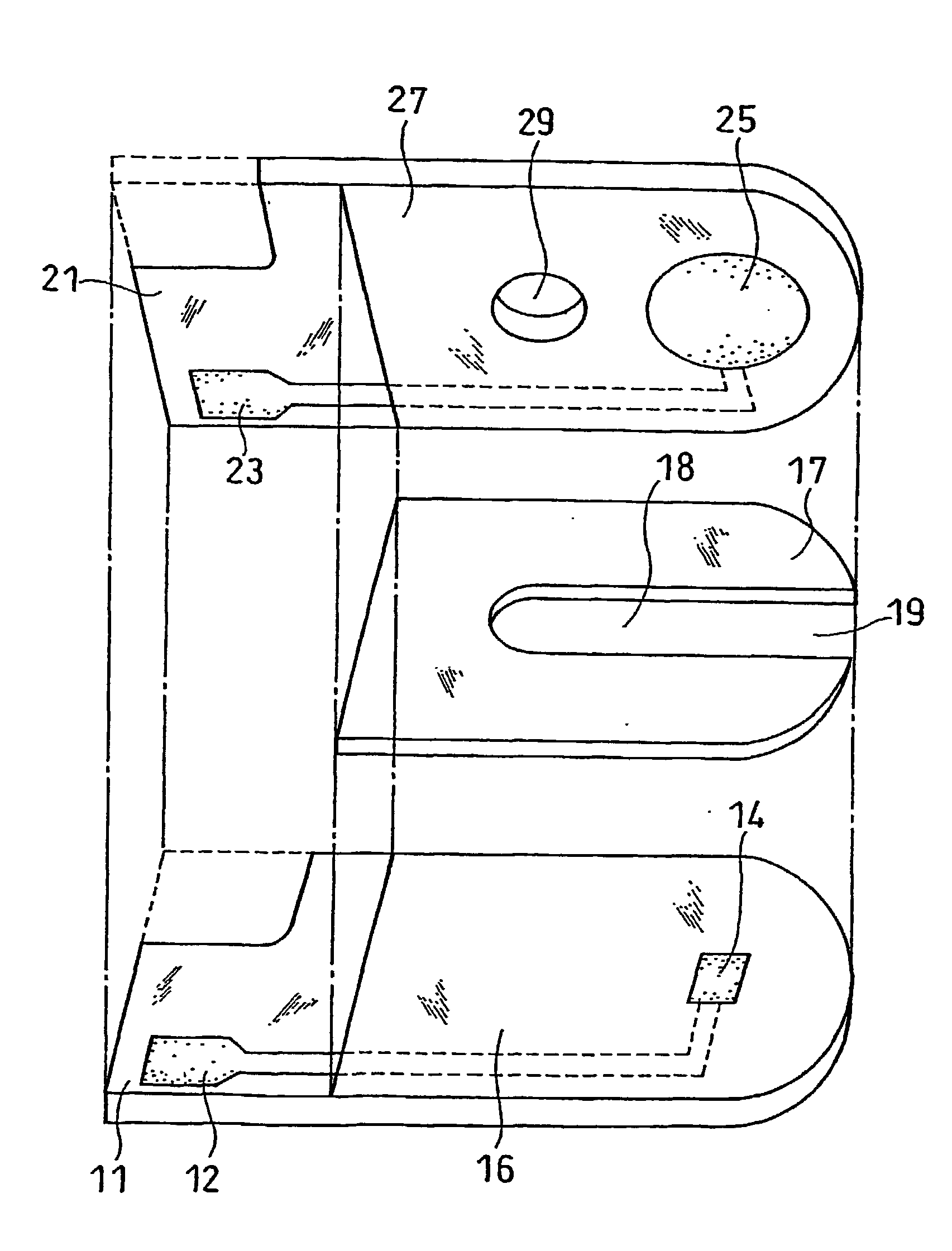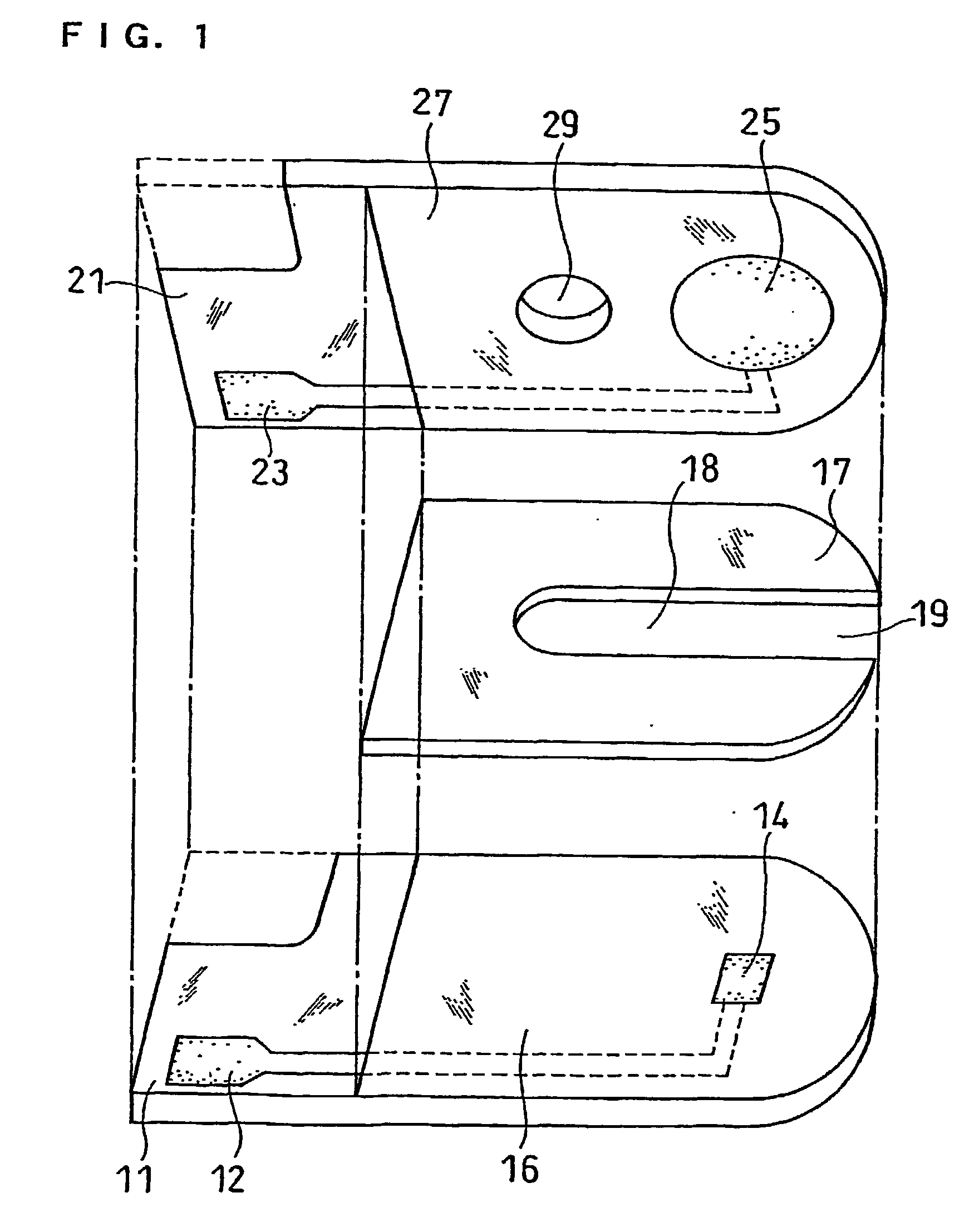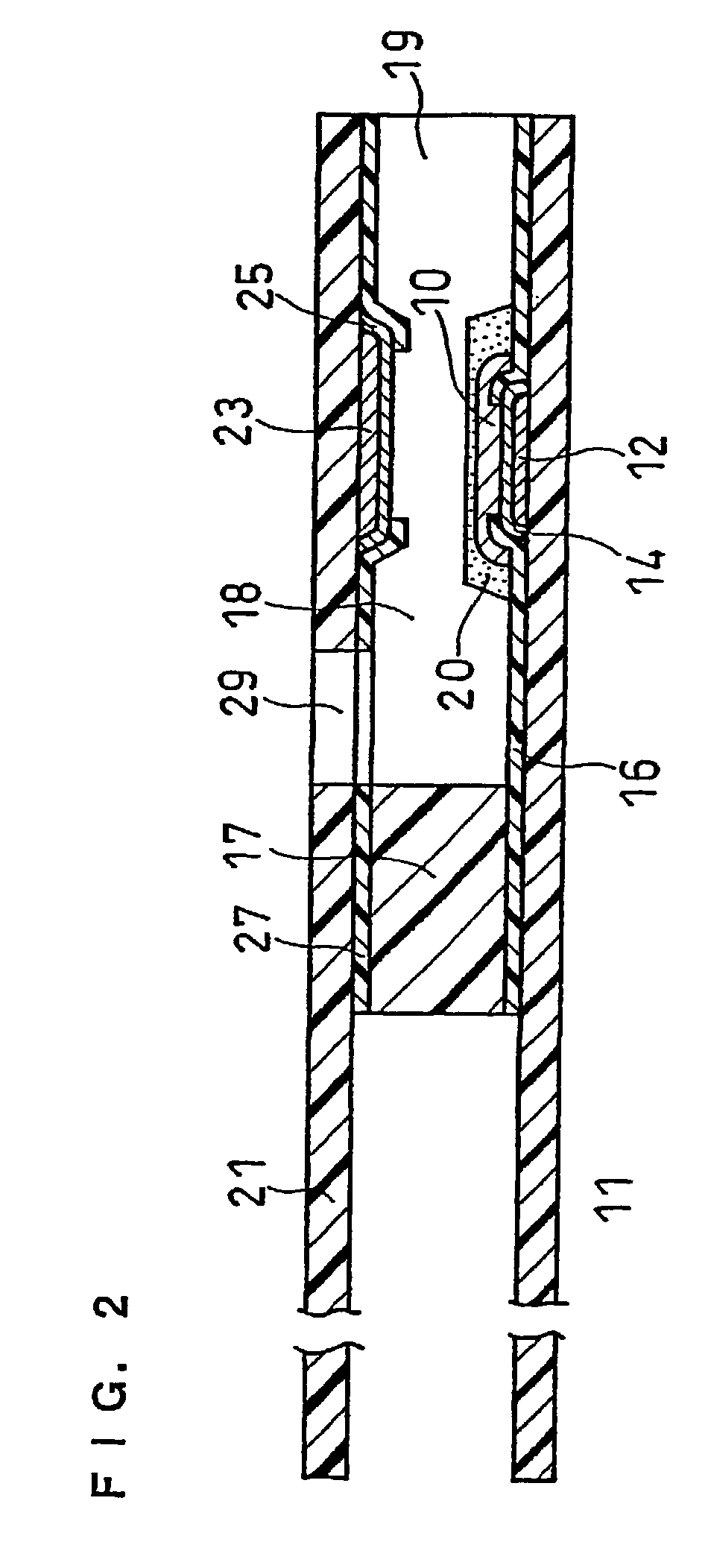Biosensor
- Summary
- Abstract
- Description
- Claims
- Application Information
AI Technical Summary
Benefits of technology
Problems solved by technology
Method used
Image
Examples
embodiment 1
[0064] Five kinds of sensors having a different-height sample supply pathway were produced by varying the thickness of the spacer member 17 in The area of the working electrode is 1.0 mm.sup.2. The counter electrode is a circle having a diameter of about 3.6 mm, and since this diameter is greater than the width of the slit 18 of the spacer member 17, part of the counter electrode is not exposed to the sample supply pathway. The area of the portion of the counter electrode exposed to the sample supply pathway is about 5.3 mm.sup.2.
[0065] As a comparative example, glucose sensors having a working electrode and a counter electrode formed on the same base plate were produced. In the same manner as in Example 1, five kinds of glucose sensors having a different-height sample supply pathway were produced. FIG. 8 is a decomposed perspective view of a sensor of the comparative example from which the reagent layer and surfactant layer are omitted, and FIG. 9 is a longitudinal cross-sectional...
example 2
[0072] Biosensors were produced in the same manner as in Example 1 except that the areas of both the working electrode and the counter electrode were made 1.0 mm.sup.2 in Embodiment 2. Then, using solutions containing glucose at 90 mg / dl and the respective glucose sensors having a different-height sample supply pathway, the value of response current was measured. FIG. 11 shows the relationship between the height of the sample supply pathway, i.e., the distance between the working electrode and the counter electrode, and the response value (ratio) in the sensors of Example 2. The response value (ratio) is expressed in a ratio obtained by defining the response value of the sensor of Example 1 of which sample supply pathway has the same height as 100.
[0073] As shown by FIG. 11, the response value (ratio) of the sensors of Example 2 relative to Example 1 sharply increases when the height of the sample supply pathway is 150 .mu.m or less. The reason may be as follows: when the working el...
example 3
[0076] In this example, biosensors were produced in the same manner as in Example 2 except that the area of the counter electrode was made 0.64 mm.sup.2. Using solutions containing glucose at 90 mg / dl and the respective glucose sensors having a different-height sample supply pathway, the value of response current was measured. FIG. 12 shows the relationship between the height of the sample supply pathway (the distance between the working electrode and the counter electrode) and the response value (ratio) in the sensors of Example 3. The response value (ratio) is expressed in a ratio obtained by defining the response value of the sensor of Example 1 of which sample supply pathway has the same height as 100.
[0077] As shown by FIG. 12, the response value (ratio) of this example relative to Example 1 sharply increases when the distance between the working electrode and the counter electrode is 150 .mu.m or less. This is presumably because of the same reasons as those of Example 2.
[0078]...
PUM
| Property | Measurement | Unit |
|---|---|---|
| Length | aaaaa | aaaaa |
| Length | aaaaa | aaaaa |
| Area | aaaaa | aaaaa |
Abstract
Description
Claims
Application Information
 Login to View More
Login to View More - R&D
- Intellectual Property
- Life Sciences
- Materials
- Tech Scout
- Unparalleled Data Quality
- Higher Quality Content
- 60% Fewer Hallucinations
Browse by: Latest US Patents, China's latest patents, Technical Efficacy Thesaurus, Application Domain, Technology Topic, Popular Technical Reports.
© 2025 PatSnap. All rights reserved.Legal|Privacy policy|Modern Slavery Act Transparency Statement|Sitemap|About US| Contact US: help@patsnap.com



